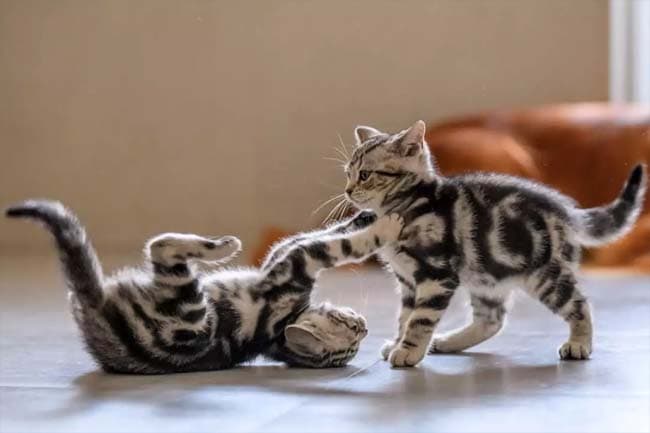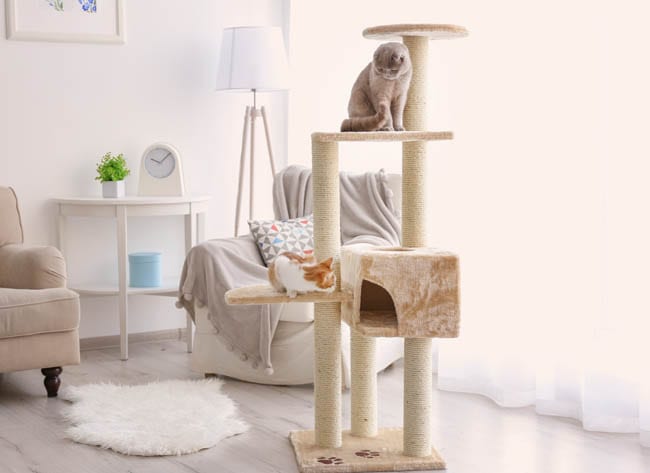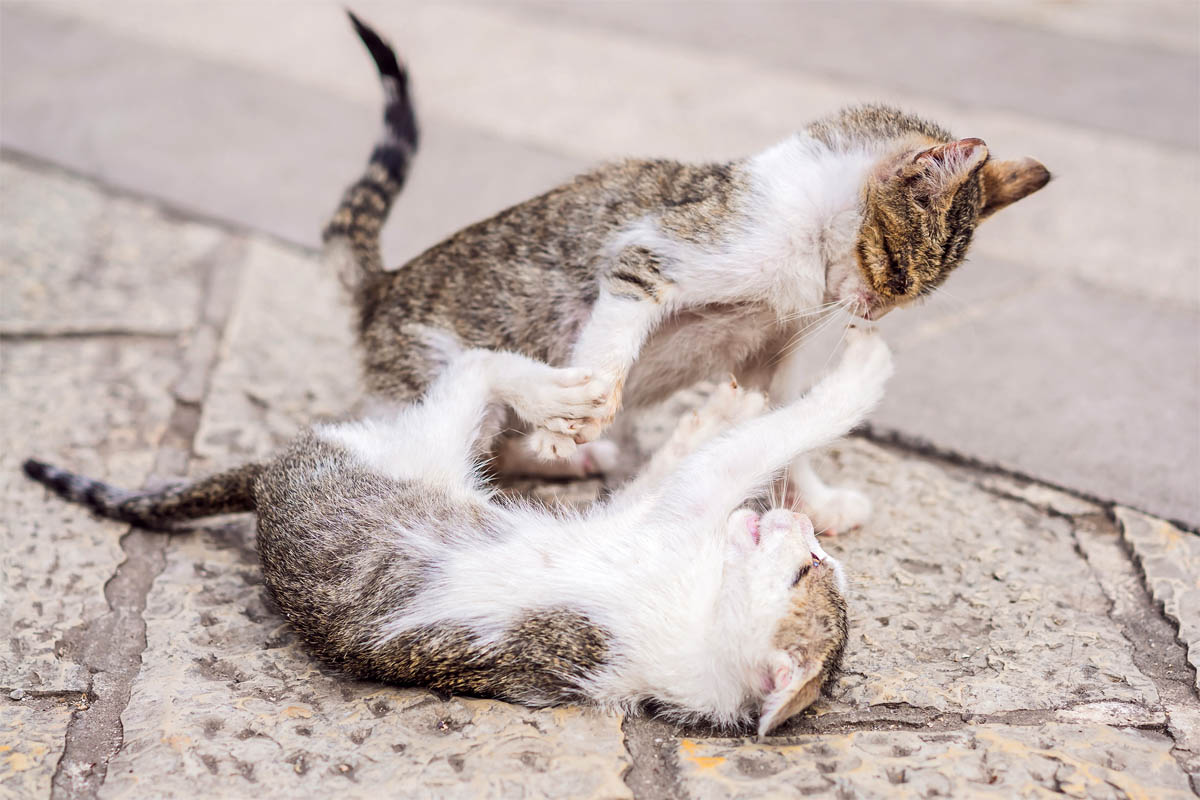When do kittens calm down?
Most kittens calm down between 6 – 12 months, by which point the kitten is approximately 15 in human years. The most active age period for kittens is between 4 weeks to 26 weeks. During this time, the kitten is growing rapidly both physically, developmentally and emotionally at which time he or she is learning through exploration and experimentation. Their coordination is still developing, as a result, there are often accidents, such as a broken glass or pot plant knocked over.
Energy levels are still high beyond six months, coordination has developed and the kitten is still curious, but less clumsy. By the seventh month, the kitten begins to sleep more but still has a playful nature as he or she continues to learn and develop.
By 12 – 18 months, the kitten transitions to adulthood, but many continue to retain their playful nature. This isn’t as hardcore as the kitten phase, however. By 3 – 4 years old, most cats have calmed down considerably and spend the bulk of their day snoozing.
Every cat is different, some calm down earlier than others. The Abyssinian, Devon Rex, Cornish Rex, Bengal and Sphynx are all regarded as high energy cats who retain their playful and energetic nature well into adulthood. Calmer breeds include the Persian, Chinchilla, Exotic, British Shorthair, Ragdoll and Birman. Most other breeds are somewhere between the high energy and calmer breeds. Obviously, the history of most mixed breed cats is often not known, therefore it can be hard to determine how active the cat will be as an adult.
If a high energy kitten is not for you, consider adopting an older cat (beyond 12 months). Personally, as much as I love kittens, I’m at the stage in my life where I don’t think I could go through the crazy kitten phase and am much happier to adopt an older cat.
Helping kittens burn their energy
Redirecting kitten energy through play can be a sanity saver for you and your kitten and there are lots of ways to provide your kitten with an outlet to burn off energy. All young animals, including humans and kittens, learn skills, coordination and even social skills through play and exploration.
Consider a second kitten

Two cats are often better than one, especially if you are out of the house for extended periods. While the addition of a second kitten is not going to result in either kitten being calmer, they will have each other to play with.
Provide plenty of opportunities to climb

Kittens love to climb, which teaches them essential hunting skills as well as developing muscle strength. If they are not provided with a suitable outlet, they will find their own. Elevated positions also give the cat a feeling of security for them to watch over their environment safely from a distance.
Cats are small predators who typically hunt rodents and birds, they’re also prey themselves to larger animals. The ability to flee to safety if chased. While many cats are now kept indoors, climbing is a natural part of who they are.
A tall, sturdy cat tree with multiple perches is the perfect outlet. As a rule, a cat tree should be at least 1.5 times taller than the length of the cat. This will enable the cat to fully stretch on the tree as he or she scratches without running out of room, and provides enough height for the cat to feel secure.
Schedule daily play sessions
Daily play sessions are important for bonding, exercise and mental stimulation. The caregiver should play an active role in daily play. Remember, in the wild cats stalk, catch and eat their prey, which lays down the groundwork for how we play with our cats.
Wand toys with feathers or a small toy animal are great for this. The caregiver moves the wand in a similar way to a bird or small rodent, gently moving it across the floor and onto furniture. Allow the cat to stalk and chase and pounce on the toy. Don’t swing it from side to side in the air which will just frustrate the cat. From time to time, let the cat pounce on the toy, and let it escape. Continue this until the end of the game where the cat is rewarded by catching its prey, and following up with a meal.
Not only does this provide an outlet for honing the hardwired hunting skills, playing lets the kitten burn some energy and will hopefully sleep during the night.
Laser pointers can be used to start a game, but are not ideal as the cat is not able to ‘catch’ the laser which can lead to frustration.
Interactive toys

We can’t devote our entire day to playing with cats, which is where interactive toys are useful. These toys can range from a simple paper bag (with the handles removed), scrunched up paper balls, ping pong balls or a humble box, to puzzles (with or without food) and cat wheels (the feline equivalent of a hamster wheel).
Remember that cat toys should be rotated regularly to prevent boredom.
Frequently asked questions
Will my kitten calm down after spaying or neutering?
An energetic, playful kitten is completely normal for all kittens. Spaying and neutering eliminate sexual behaviour such as calling, spraying and roaming and protect against cancer, pyometra and some infectious diseases.
Do energetic kittens grow into energetic cats?
All healthy kittens are full of energy but don’t all necessarily grow into energetic cats.
Why are kittens so hyperactive at night?
Cats and kittens are crepuscular, which means they are active during dusk and dawn. So, while most of us don’t appreciate that 5 AM wake up call, your kitten or cat is just following instinct.
Conclusion
- 0 – 4 weeks: Eating and sleeping
- 4 – 26 weeks: Exploring and learning, energy levels are at their highest
- 26 – 52 weeks: The kitten continues to grow and develop, but the high energy is slowly replaced by a somewhat calmer kitten, but not quite to the level of an adult cat
- 1 year – The crazy kitten phase should be mostly over, but this can vary from cat to cat
Feature image: Elizaveta Galitckaia/Shutterstock

